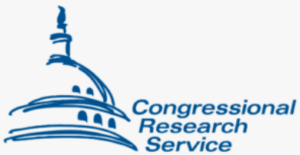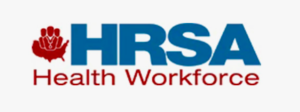 – Deadline Extended. Each program director of active HRSA grants has received an invitation to take our new and improved Grantee Satisfaction Survey. With the highest possible response rate through June 24, we can pinpoint crucial areas for action. For general questions about the survey, contact HRSAGranteeSurvey@hrsa.gov
– Deadline Extended. Each program director of active HRSA grants has received an invitation to take our new and improved Grantee Satisfaction Survey. With the highest possible response rate through June 24, we can pinpoint crucial areas for action. For general questions about the survey, contact HRSAGranteeSurvey@hrsa.gov
CRS Answers FAQs about Federal Funding for Health Care Facilities
 The Congressional Research Service (CRS) compiles Frequently Asked Questions (FAQ) with background information on federal programs, including those that may be available to support facilities during an emergency or natural disaster. There are many references to rural throughout, describing facility types, payment models, and rural-specific funding.
The Congressional Research Service (CRS) compiles Frequently Asked Questions (FAQ) with background information on federal programs, including those that may be available to support facilities during an emergency or natural disaster. There are many references to rural throughout, describing facility types, payment models, and rural-specific funding.
White House Releases Factsheet Highlighting Efforts Toward Cybersecurity in Healthcare
 Responding to recent cyber attacks in the health care sector, the White House outlined a number of actions to mitigate further disruption to providers and patients. The factsheet notes rural providers such as Critical Access Hospitals and Rural Emergency Hospitals are particularly vulnerable and details commitments from leading technology companies to provide free and low-cost resources for rural hospitals across the country.
Responding to recent cyber attacks in the health care sector, the White House outlined a number of actions to mitigate further disruption to providers and patients. The factsheet notes rural providers such as Critical Access Hospitals and Rural Emergency Hospitals are particularly vulnerable and details commitments from leading technology companies to provide free and low-cost resources for rural hospitals across the country.
HRSA Makes Awards for the Rural Health Network Development Planning Program

The Federal Office of Rural Health Policy, located in HRSA, awarded approximately $3 million to 30 awardees through the Rural Health Network Development Planning Program to support organizations in their efforts to develop integrated health networks to conduct planning activities over the course of one year, with the goal of expanding access and improving quality of care in the rural communities they serve. The project period is July 1, 2024 through June 30, 2025.
HRSA Invests $11 Million to Expand Medical Residencies in Rural Communities

Today, HRSA announced awards of more than $11 million to 15 organizations to strengthen the health workforce in rural areas. Administered through the Federal Office of Rural Health Policy, located within HRSA, the Rural Residency Planning and Development Program supports the planning and establishment of new residency training programs in family medicine, internal medicine, psychiatry, preventive medicine, obstetrics and gynecology, and general surgery. HRSA-funded research has found that more than half of rural U.S. counties lack hospital obstetric services. In response to the declining rural access to maternal health care, one of the awards will be used to create the first obstetrics and gynecology Rural Track Program in the country. Another six of today’s 15 awards will be used to develop new family medicine residency programs with a focus on enhanced obstetrical training in rural communities. Award recipients will each receive up to $750,000 over three years to establish new rural residency programs. They will use this funding to support accreditation costs, curriculum development, faculty recruitment and retention, resident recruitment activities, and consultation services to inform program development. These awards complement efforts by the Administration and by Congress to reform and expand Medicare payment policies for residency training.
National Dental and Fluoridation Associations Respond to New Fluoride Study
The Journal of the American Medical Association (JAMA) recently published a study that examined fluoride exposure during pregnancy. In response to the release of the study, the American Dental Association and American Fluoridation Society released statements and resources affirming support of fluoride for oral health.
Click here to read the American Dental Association statement.
Click here to read the American Fluoridation Society Key Messages.
HRSA Releases Updated HPSA Data

The U.S. Department of Health and Human Services’ Health Resources & Services Administration (HRSA) released updated data on Health Professional Shortage Areas (HPSAs). In addition, they updated the number of additional dental health practitioners needed to support the HPSAs. The number of HPSAs has grown nationwide since February. The updated data are available on the HPSA dashboard.
CMS Announces New Funding for Navigators

The federal administration is continuing its robust investment in Navigators, who help people across the country – especially in underserved communities – sign up for health care coverage, by announcing today the availability of $500 million in grants over the next five years. Navigators have been incredibly effective, helping contribute to the record-breaking number of people – 21.4 million – who signed up for health care coverage through the Marketplaces during the 2024 Open Enrollment Period.
The Navigators’ effectiveness is demonstrated by how many people in underserved communities have signed up for Marketplace coverage in 2024:
- Twenty-two percent of enrollees who report their race/ethnicity are Latino. If the percentage is the same among those not reporting, the estimated number of Latino Americans with Marketplace coverage in 2024 would be approximately five million.
- Nine percent of enrollees who report their race/ethnicity are Black. If the percentage is the same among those not reporting, the estimated number of Black Americans with Marketplace coverage in 2024 would be almost two million.
- About 12 percent of enrollees who report their race/ethnicity are AANHPI. If the percentage is the same among those not reporting, the estimated number of AANHPI Americans with Marketplace coverage in 2024 would be over 5 million.
- One percent of enrollees who report their race/ethnicity are AI/AN. If the percentage is the same among those not reporting, the estimated number of AI/AN Americans with Marketplace coverage in 2024 would be 200,000.
The Centers for Medicare & Medicaid Services (CMS) expects to award a total of $500 million over the five-year period of performance, provided in five budget periods of 12 months each. For the first 12-month budget period, to be awarded this fall, $100 million is available, the largest investment in the Navigator program to date.
Web Links
- 2024 Navigator Notice of Funding Opportunity (NOFO): https://www.grants.gov/search-results-detail/349642
- 2024 Navigator NOFO Frequently Asked Questions (FAQs) for Applicants: https://www.cms.gov/files/document/2024-navigator-nofo-faqs-applicants.pdf
- Resources for Navigator Applicants: https://www.cms.gov/marketplace/in-person-assisters/programs-procedures/in-person-assistance#Additional_Resources_for_Navigator_Applicants
- CMS Newsroom: https://www.cms.gov/newsroom/press-releases/biden-harris-administration-releases-data-showing-historic-gains-health-care-coverage-minority
Final Recommendation Statement: Implementing Interventions to Prevent Falls in Community-Dwelling Older Adults

The U.S. Preventive Services Task Force released a final recommendation statement on interventions to prevent falls in community-dwelling older adults. The Task Force found that exercise can help prevent falls in adults 65 and older who are at increased risk. Additional interventions might be helpful for some older adults. To view the recommendation, the evidence on which it is based, and a summary for clinicians, please go here.
State Tobacco-Related Disparities Dashboard Released
 The state tobacco-related disparities dashboard, available on the Centers for Disease Control and Prevention (CDC) website, is an intuitive visualization platform. Use it to quickly explore cigarette smoking prevalence and related disparities in states by numerous factors. It can help you identify opportunities for improvement and action with your health center patients.
The state tobacco-related disparities dashboard, available on the Centers for Disease Control and Prevention (CDC) website, is an intuitive visualization platform. Use it to quickly explore cigarette smoking prevalence and related disparities in states by numerous factors. It can help you identify opportunities for improvement and action with your health center patients.
